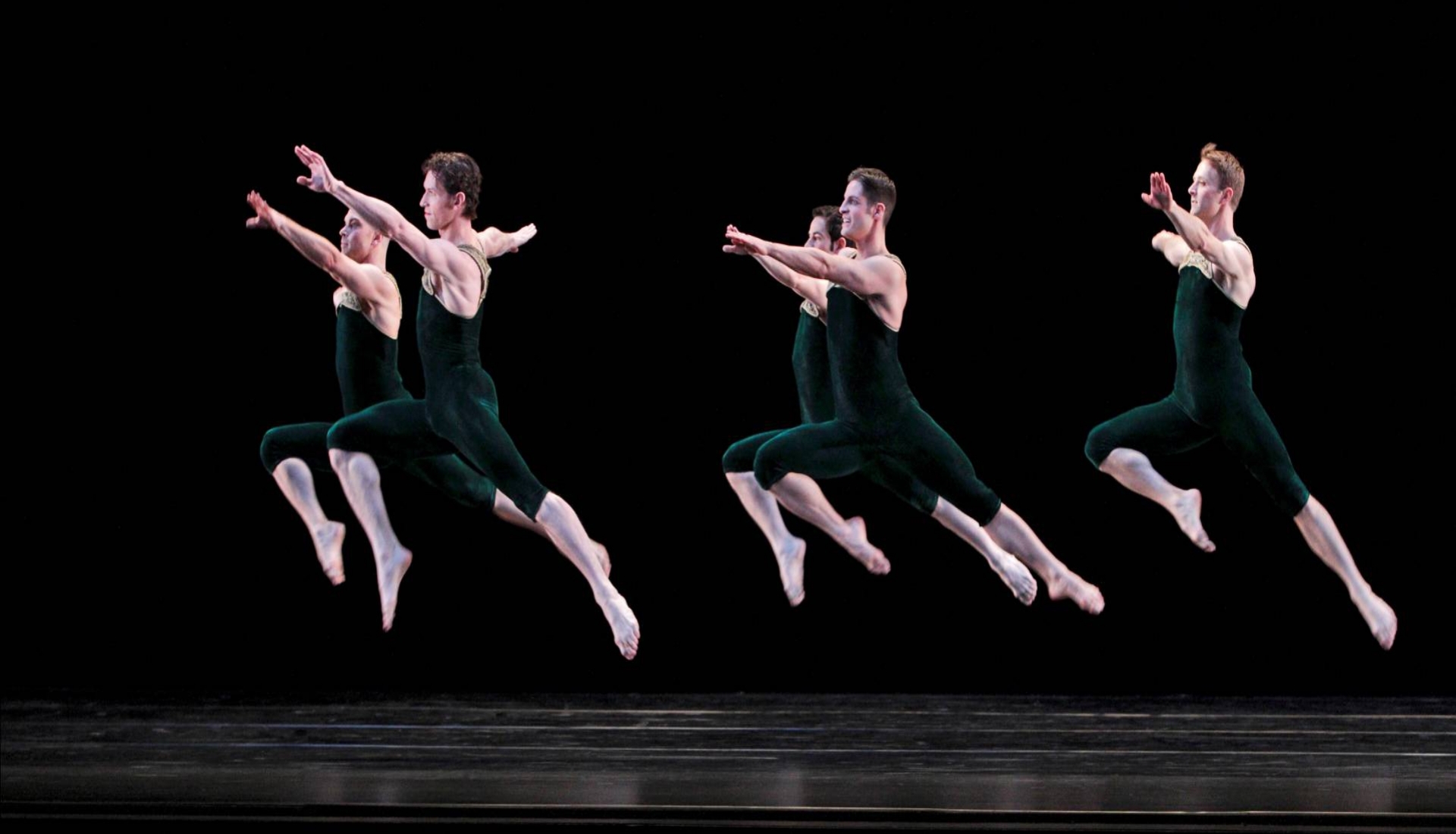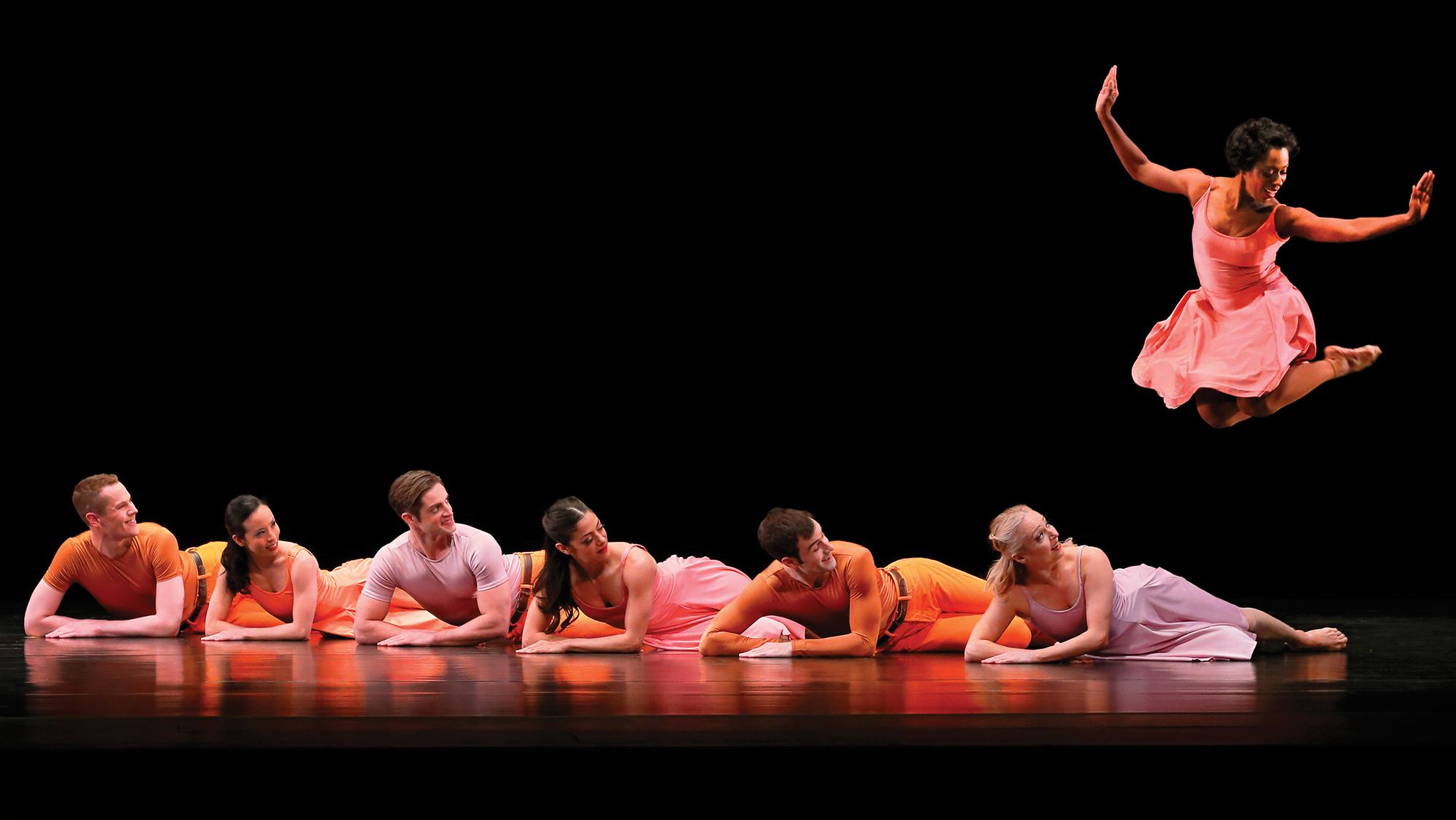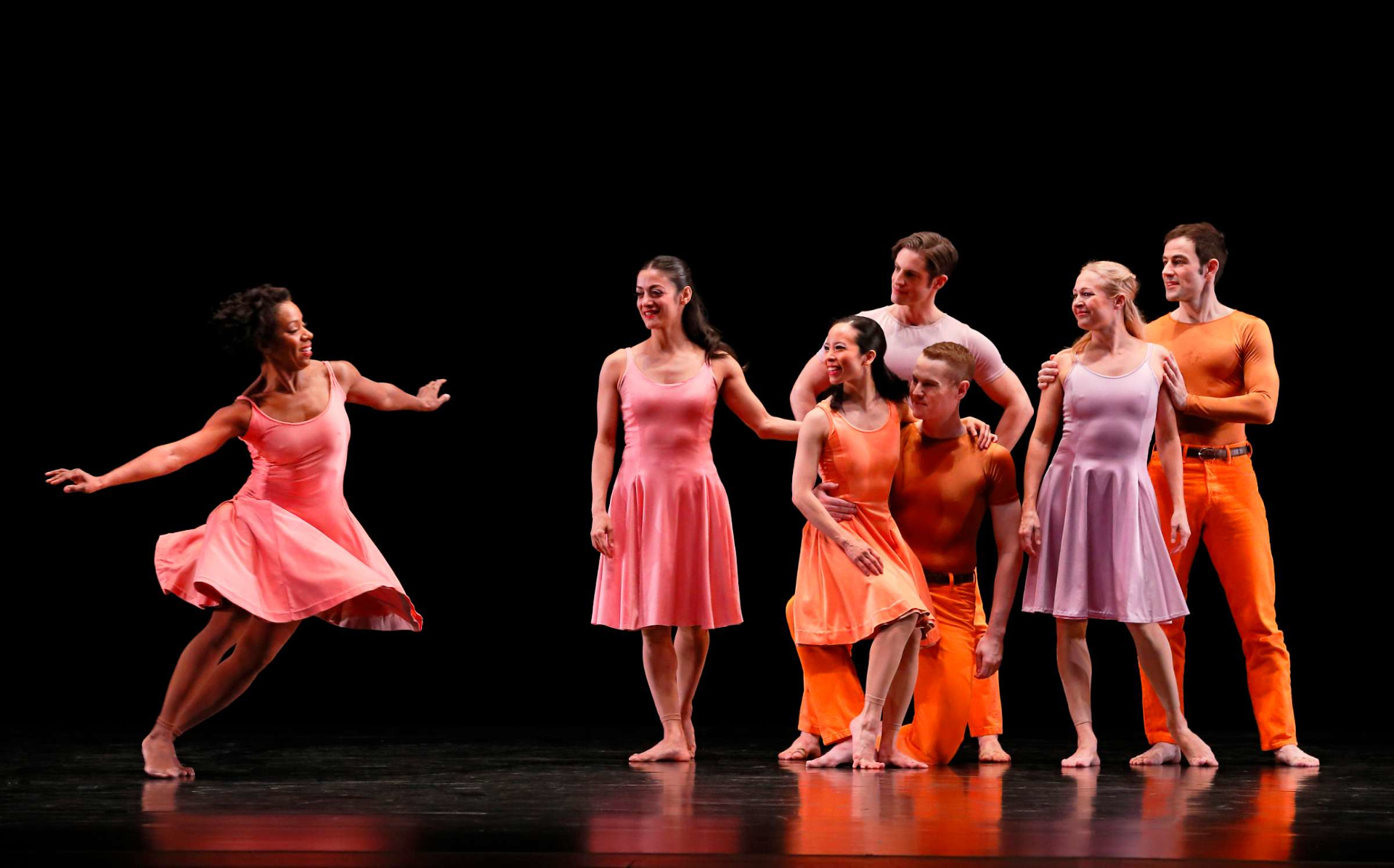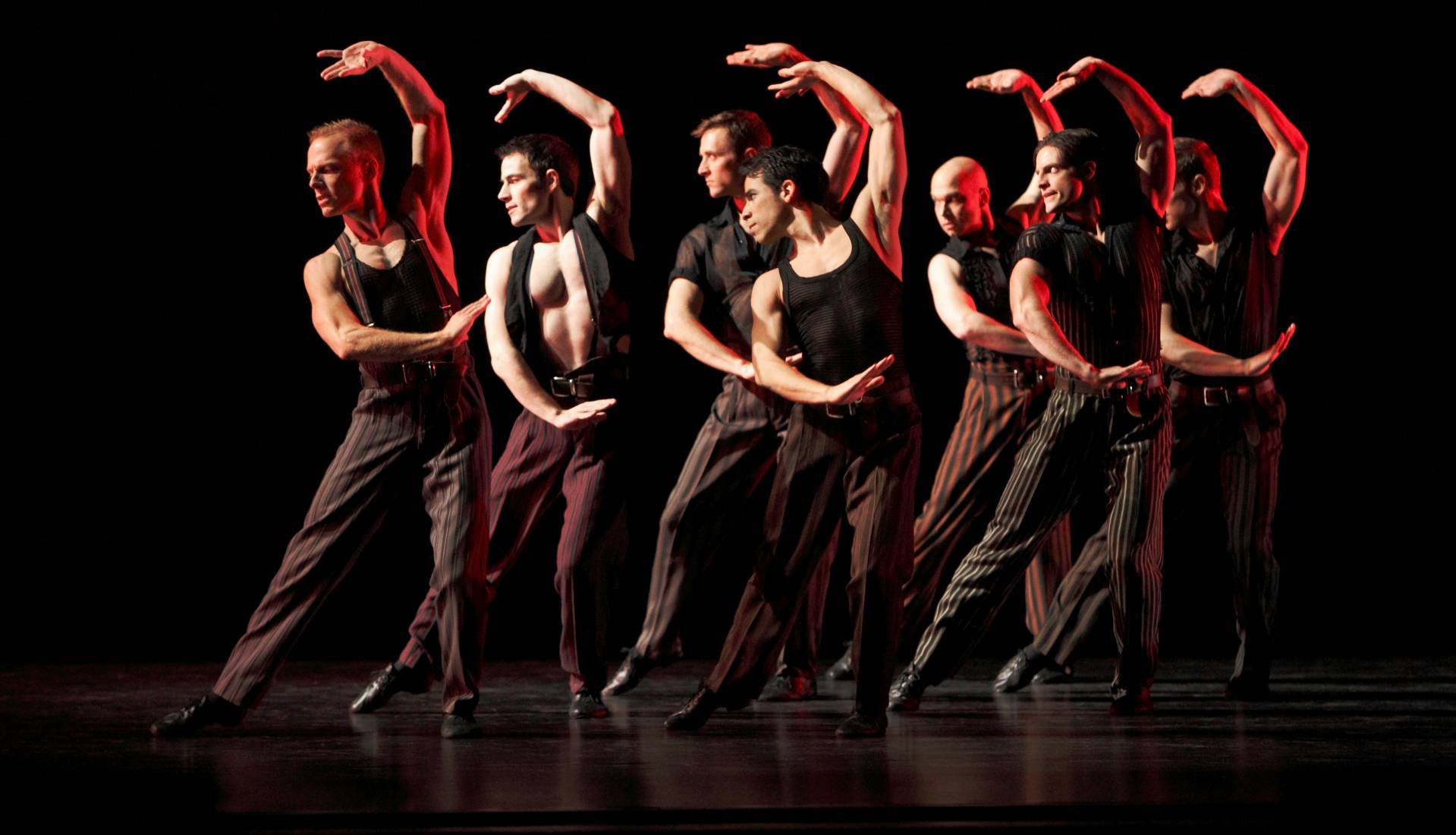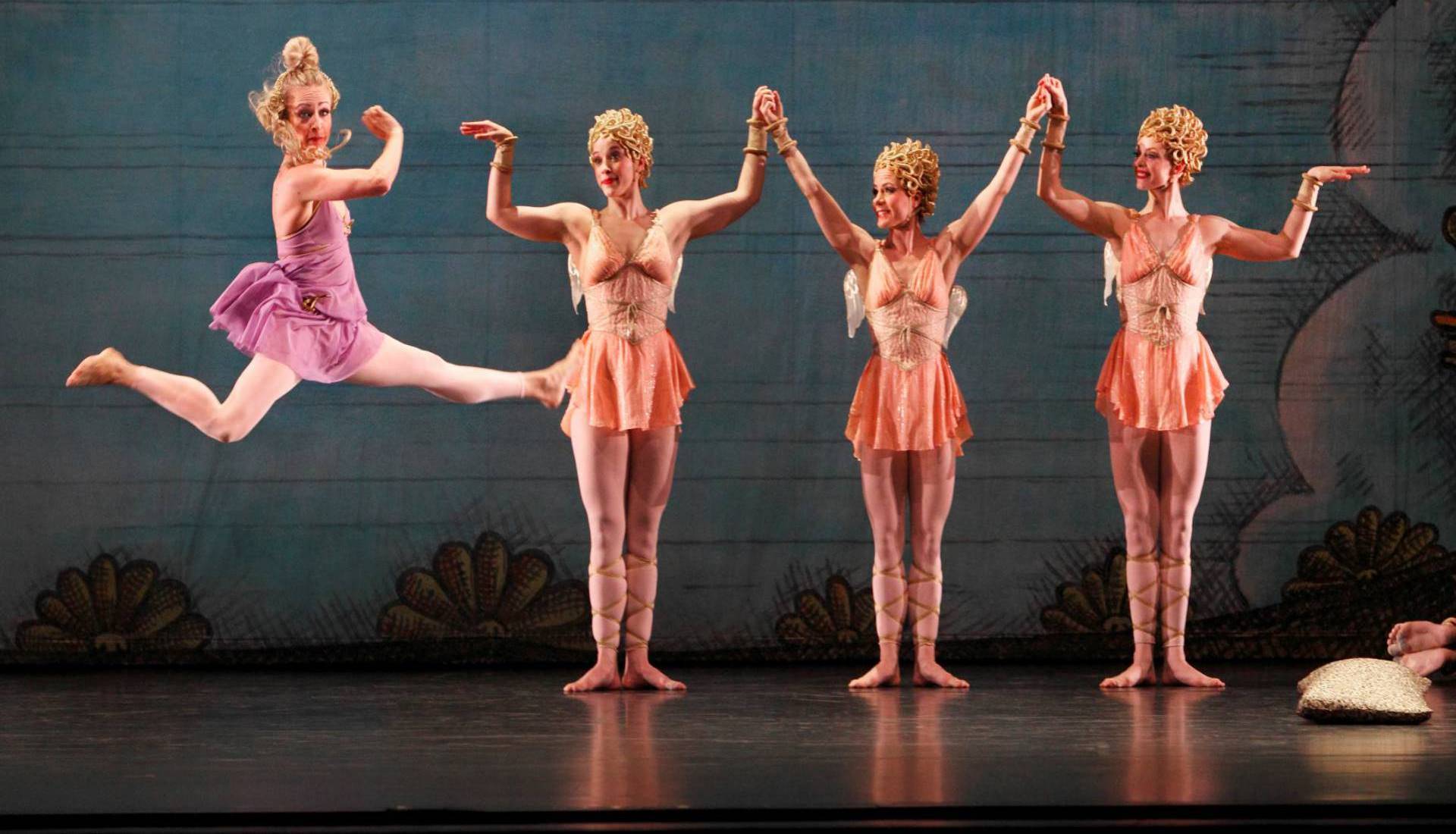Paul Taylor
Choreographer Paul Taylor is the last living member of the pantheon that created America’s indigenous art of modern dance. At an age when most artists’ best work is behind them, Mr. Taylor continues to win public and critical acclaim for the vibrancy, relevance and power of his creations. As he has since his origins as a dance maker in 1954, he offers cogent observations on life’s complexities while tackling some of society’s thorniest issues. While he may propel his dancers through space for the sheer beauty of it, he more frequently uses them to illuminate such profound issues as war, piety, spirituality, sexuality, morality and mortality. If, as George Balanchine said, there are no mothers-in-law in ballet, there certainly are dysfunctional families, disillusioned idealists, imperfect religious leaders, angels and insects in Mr. Taylor’s dances.
Paul Taylor was born on July 29, 1930 – exactly nine months after the stock market crash that resulted in the Great Depression – and grew up in and around Washington, DC. He attended Syracuse University on a swimming scholarship in the late 1940s until he discovered dance through books at the University library, and then transferred to The Juilliard School. In 1954 he assembled a small company of dancers and began to choreograph. A commanding performer despite his late start in dance, he joined the Martha Graham Dance Company in 1955 for the first of seven seasons as soloist while continuing to choreograph on his own troupe. In 1959 he was invited to be a guest artist with New York City Ballet, where Balanchine created the Episodes solo for him.
Mr. Taylor has made 139 dances since 1954, many of which have attained iconic status. He has covered a breathtaking range of topics, but recurring themes include life and death; the natural world and man’s place within it; love and sexuality in all gender combinations; and iconic moments in American history. His poignant looks at soldiers, those who send them into battle, and those they leave behind prompted the New York Times to hail him as “among the great war poets” – high praise indeed for an artist in a wordless medium. While some of his dances have been termed “dark” and others “light,” the majority of his works are dualistic, mixing elements of both extremes. And while his work has largely been iconoclastic, he has also made some of the most purely romantic, most astonishingly athletic, and downright funniest dances ever put on stage.
Mr. Taylor first gained notoriety as a dance maker in 1957 with Seven New Dances; its study in non-movement famously earned it a blank newspaper review, and Graham subsequently dubbed him the “naughty boy” of dance. In 1962, with his first major success – the sunny Aureole – he set his trailblazing modern movement
not to a contemporary score but to music composed 200 years earlier, and then went to the opposite extreme a year later with a view of purgatory in Scudorama. He inflamed the establishment in 1965 by lampooning some of America’s most treasured icons in From Sea To Shining Sea, and created more controversy in 1970 by putting incest center stage in Big Bertha. After retiring as a performer in 1974, he created an instant classic, the exuberant Esplanade (1975), which remains his signature work. In Cloven Kingdom (1976) he examined the primitive nature that lurks just below man’s veneer of sophistication and gentility. He looked at intimacy among men at war in 1983 – long before “Don’t ask, don’t tell” became official policy – in Sunset; pictured Armageddon in Last Look (1985); and peered unflinchingly at religious hypocrisy and marital rape in Speaking In Tongues (1988). In Company B (1991) he used popular songs of the Andrews Sisters to juxtapose the high spirits of Americans during the 1940s with the sacrifices so many of them made during World War II. In The Word (1998), he railed against religious zealotry and blind conformity to authority. In the first decade of the new millennium he condemned American imperialism in Banquet of Vultures, poked fun at feminism in Dream Girls and stared death square in the face in the Walt Whitman- inspired Beloved Renegade. Brief Encounters (2009) and The Uncommitted (2010) each examined the inability of many men and women in  contemporary society to form meaningful, lasting relationships.
Hailed for uncommon musicality and catholic taste, Mr. Taylor has set movement to music so memorably that for many people it is impossible to hear certain orchestral works and popular songs and not think of his dances. He has set works to an eclectic mix that includes Medieval masses, Renaissance dances, baroque concertos, classical symphonies, and scores by Debussy, Cage, Feldman, Ligeti and Pärt; Ragtime, Tango, Tin Pan Alley, Barbershop Quartets and The Mamas and The Papas; and telephone time announcements, loon calls, and laughter.
Mr. Taylor has influenced dozens of men and women who have gone on to choreograph – many on their own troupes – including Pina Bausch, Patrick Corbin, Laura Dean, Senta Driver, Thomas Evert, Danny Ezralow, Danny Grossman, Amy Marshall, David Parsons, Twyla Tharp, Takehiro Ueyama, Doug Wright and Lila York. Many others have gone on to become respected teachers at colleges and universities, including Carolyn Adams, Ruth Andrien, Mary Cochran, Connie Dinapoli, Orion Duckstein, David Grenke, Kate Johnson, Elizabeth Keen, Linda Kent, Renee Kimball, Sharon Kinney, Jane Kosminsky, Joao Mauricio, Susan McGuire, Sharon Stone, Kenneth Tosti, Dan Wagoner, Elizabeth Walton, Karla Wolfangle and Raegan Wood. And he has worked closely with such outstanding artists as Jasper Johns, Alex Katz, Ellsworth Kelly, William Ivey Long, Santo Loquasto, Gene Moore, Tharon Musser, Robert Rauschenberg, John Rawlings, Thomas Skelton and Jennifer Tipton.
As the subject of Matthew Diamond’s documentary, Dancemaker, and author of the autobiography Private Domain and Wall Street Journal essay Why I Make Dances, Mr. Taylor has shed light on the mysteries of the creative process as few artists have. Dancemaker, which received an Oscar nomination, was hailed by Time as “perhaps the best dance documentary ever.” His autobiography, Private Domain, originally published by Alfred A. Knopf and re-released by North Point Press and later by the
University of Pittsburgh Press, was nominated by the National Book Critics Circle as the most distinguished biography of 1987.
A documentary on the making of Three Dubious Memories, entitled Creative Domain, has been made, and a new collection of his essays, Facts and Fancies, will be published shortly.
Mr. Taylor has received nearly every important honor given to artists in the United States. In 1992 he was a recipient of the Kennedy Center Honors and received an Emmy Award for Speaking in Tongues, produced by WNET/New York the previous year. He was awarded the National Medal of Arts by President Clinton in 1993. In 1995 he received the Algur H. Meadows Award for Excellence in the Arts and was named one of 50 prominent Americans honored in recognition of their outstanding achievement by the Library of Congress’s Office of Scholarly Programs. He is the recipient of three Guggenheim Fellowships and honorary Doctor of Fine Arts degrees from California Institute of the Arts, Connecticut College, Duke University, The Juilliard School, Skidmore College, the State University of New York at Purchase, Syracuse University and Adelphi University. Awards for lifetime achievement include a MacArthur Foundation Fellowship – often called the “genius award” – and the Samuel H. Scripps American Dance Festival Award. Other awards include the New York State Governor’s Arts Award and the New York City Mayor’s Award of Honor for Art and Culture. In 1989 Mr. Taylor was elected one of ten honorary American members of the American Academy and Institute of Arts and Letters. Having been elected to knighthood by the French government as Chevalier de l’Ordre des Arts et des Lettres in 1969 and elevated to Officier in 1984 and Commandeur in 1990, Mr. Taylor was awarded France’s highest honor, the LĂ©gion d’Honneur, for exceptional contributions to French culture, in 2000.
Mr. Taylor’s dances are performed by the Paul Taylor Dance Company, the six- member Taylor 2 (begun in 1993), and companies throughout the world including the Royal Danish Ballet, Rambert Dance Company, American Ballet Theatre, San Francisco Ballet, Miami City Ballet, and Alvin Ailey American Dance Theater. He remains among the most sought-after choreographers working today, commissioned by presenting organizations the world over. Continuing to embrace change and take risks as he has his entire career, in 2012 he moved his Company to Lincoln Center for a three-week season, resulting in the highest ticket sales in the Company’s 58- year history. The engagement was summed up this way in the New York Times:
“During this season Mr. Taylor’s work also reminded me of the playwright Harold Pinter’s: it’s the tension between Taylor’s use of familiar language and his instinctive plunge into some of the enigmatic root ingredients of drama. Esplanade perfectly illustrates this: The fact that none of its vocabulary (walking, running, falling, skipping) is new should blind nobody to the extraordinary, often disturbing eloquence of its human situations. This lavish three-week retrospective, spanning almost 60 years of work, has demonstrated that this sometimes irritating and corny dance maker is one of the superlative and more disconcerting artists of our time.”
Paul Taylor Dance Company
“The American spirit soars whenever Taylor’s dancers dance.” – San Francisco Chronicle
The Paul Taylor Dance Company, established in 1954, is one of the world’s most highly respected and sought-after ensembles.
Dance maker Paul Taylor first presented his choreography with five other dancers in Manhattan on May 30, 1954. That modest performance marked the beginning of nearly 60 years of unrivaled creativity, and in the decades that followed, Mr. Taylor became a cultural icon and one of history’s most celebrated artists, hailed as part of the pantheon that created American modern dance.
The Paul Taylor Dance Company and Taylor 2, created in 1993, have traveled the globe many times over, bringing Mr. Taylor’s ever-burgeoning repertoire to theaters and venues of every size and description in cultural capitals, on college campuses and in rural communities – and often to places modern dance had never been before. The Taylor Company has performed in more than 520 cities in 62 countries, representing the United States at arts festivals in more than 40 countries and touring extensively under the aegis of the U.S. Department of State. In 1997 the Company toured throughout India in celebration of that nation’s 50th Anniversary. Its 1999 engagement in Chile was named the Best International Dance Event of 1999 by the country’s Art Critics’ Circle. In the summer of 2001 the Company toured in the People’s Republic of China and performed in six cities, four of which had never seen American modern dance before. In the spring of 2003 the Company mounted an award-winning four-week, seven-city tour of the United Kingdom. The Company’s performances in China in November 2007 mark its fourth tour there.
While continuing to garner international acclaim, the Paul Taylor Dance Company performs more than half of each touring season in cities throughout the United States. The Company’s New York City season in 2005, marking its Anniversary, was attended by more than 25,000 people. In celebration of the Anniversary and 50 years of creativity by one of the most extraordinary artists the world has ever known, the Taylor Foundation presented Mr. Taylor’s works in all 50 States between March 2004 and November 2005. That tour underscored the Taylor Company’s historic role as one of the early touring companies of American modern dance. The 50th Anniversary celebration also featured a quartet of new dances.
In 2012 the Company enjoyed a triumphant three-week season in its new New York City performance venue, the David H. Koch Theater at Lincoln Center.
Beginning with its first television appearance for the Dance in America series in 1978, the Paul Taylor Dance Company has appeared on PBS in nine different programs, including the 1992 Emmy Award- winning Speaking in Tongues and The Wrecker’s Ball — including Company B, Funny Papers, and A Field of Grass — which was nominated for an Emmy Award in 1997. In 1999 the PBS American Masters series aired Dancemaker, the Academy Award nominated documentary about Mr. Taylor and his Company. In 2004, PBS aired Acts of Ardor, featuring Black Tuesday and Promethean Fire. Dancemaker is available on DVD.




